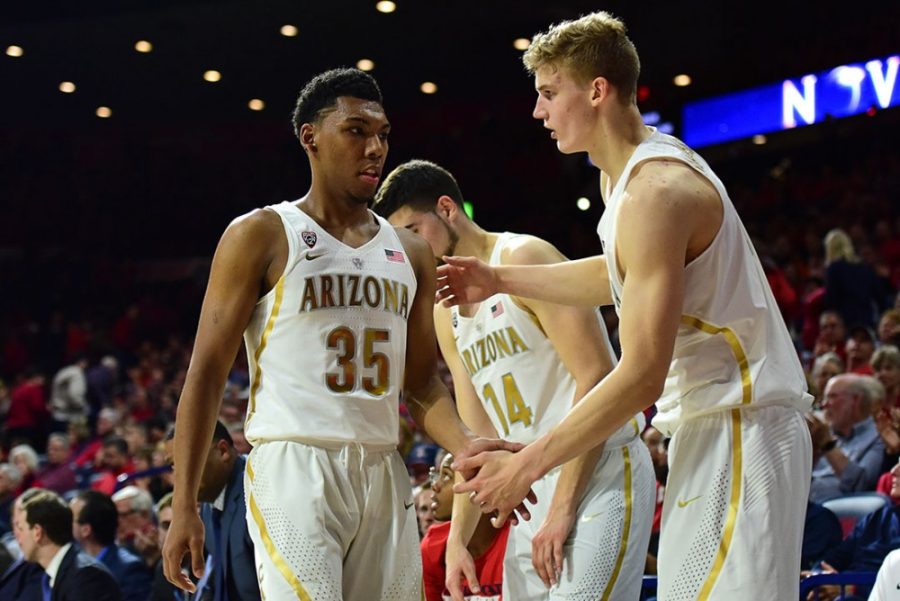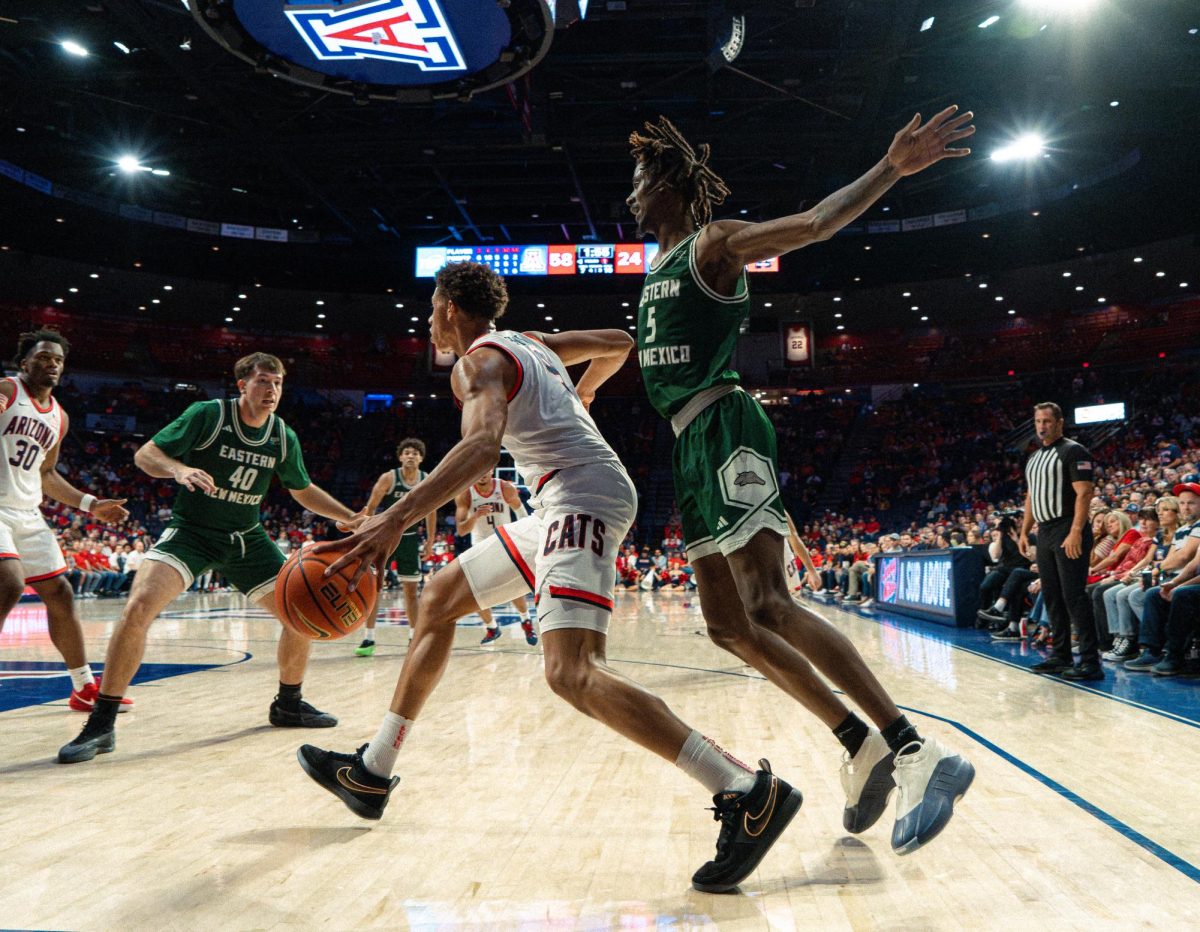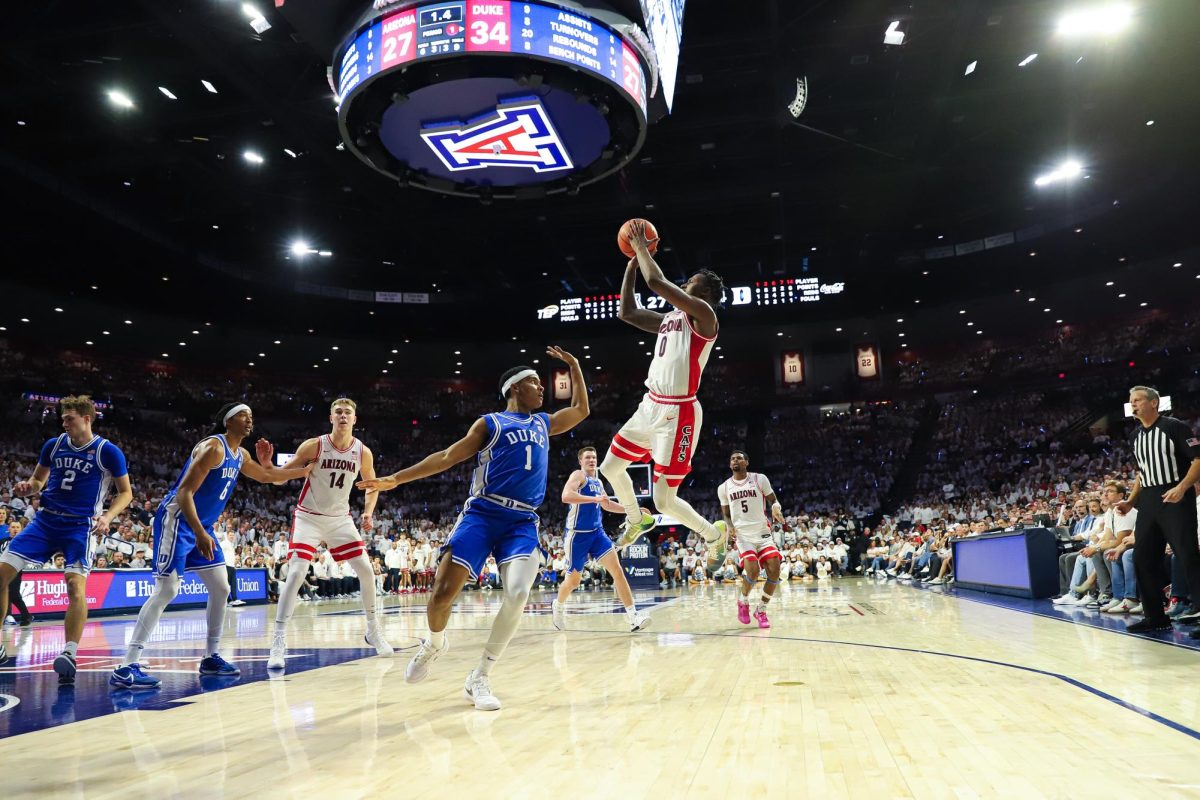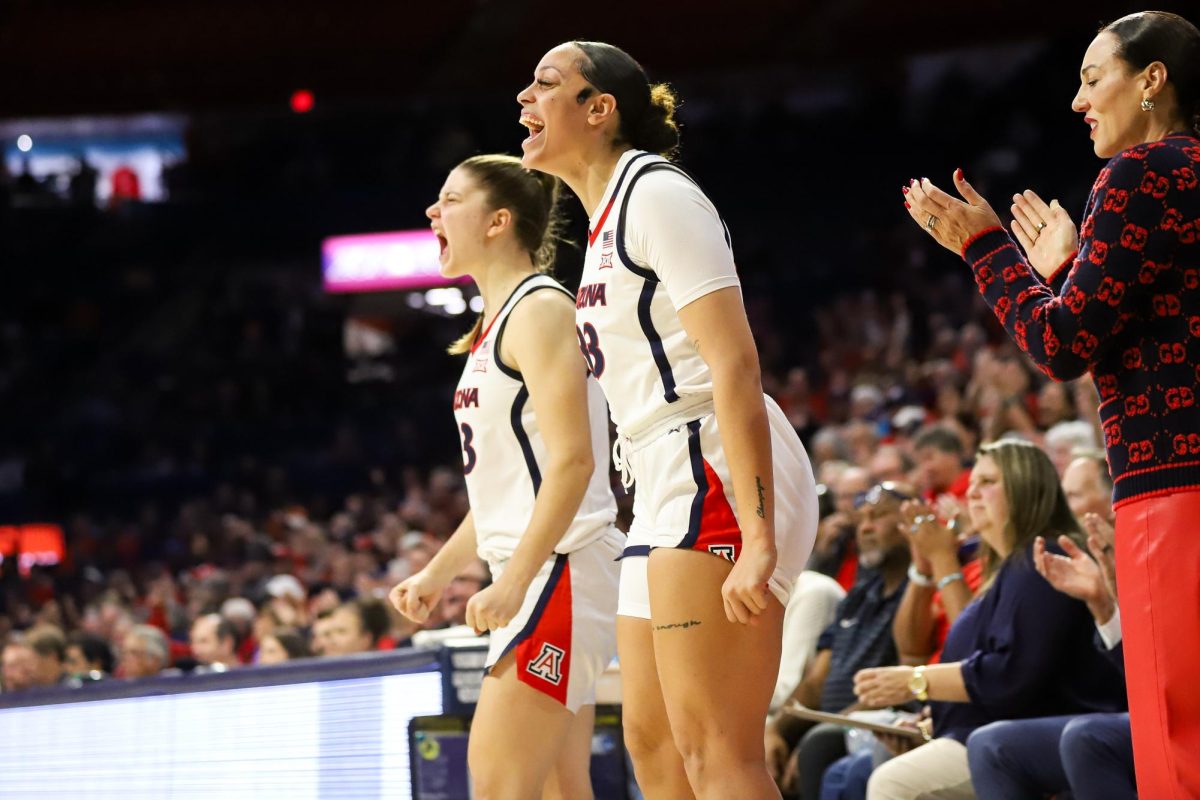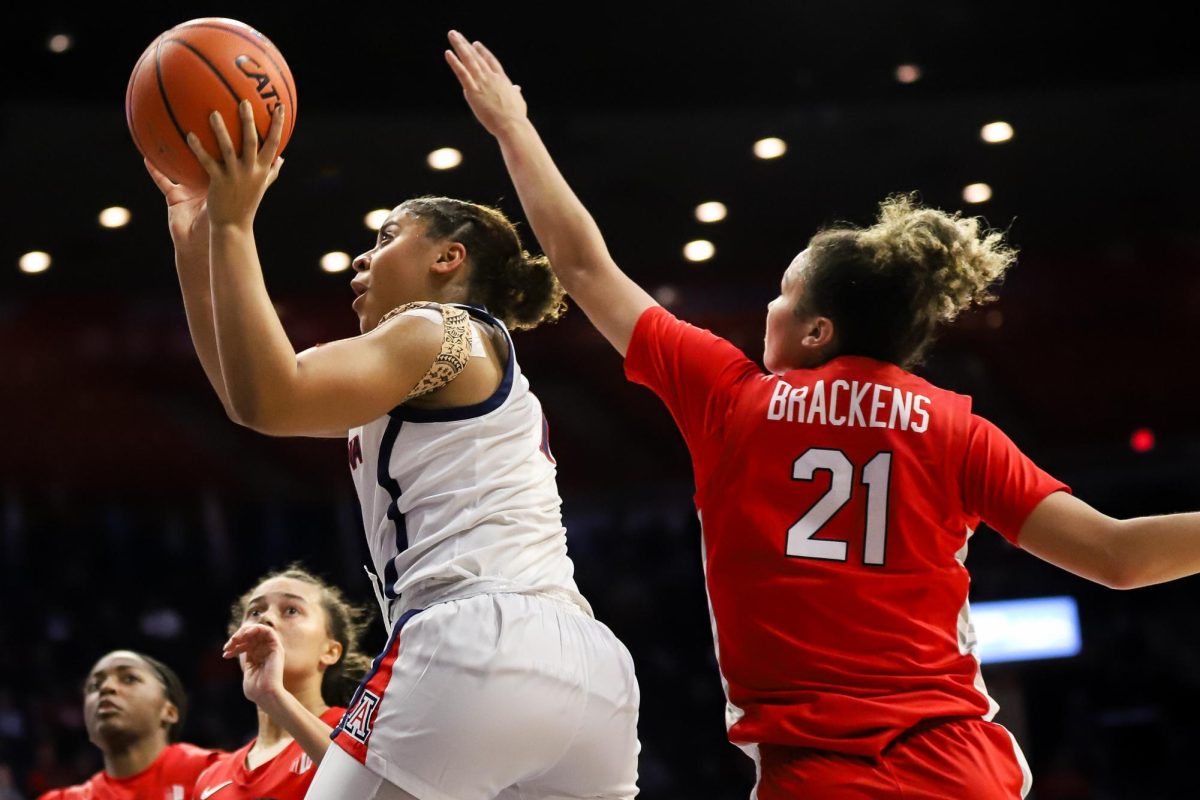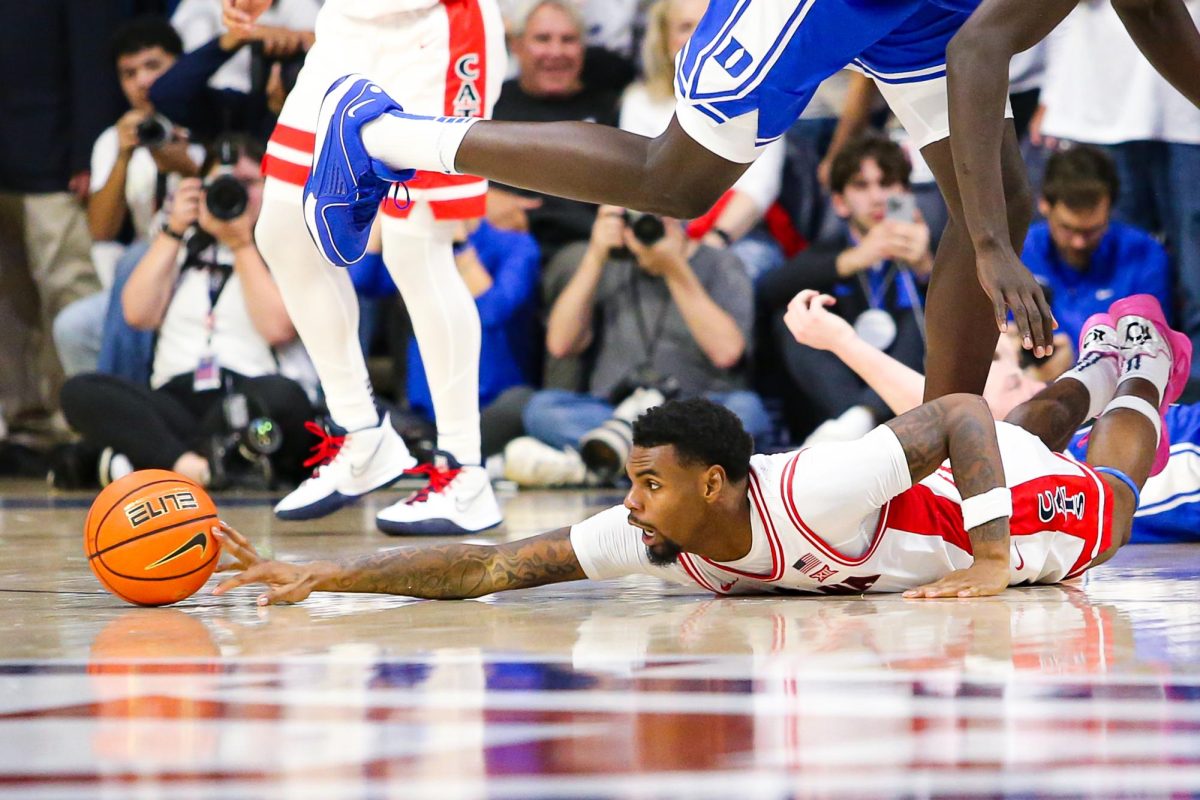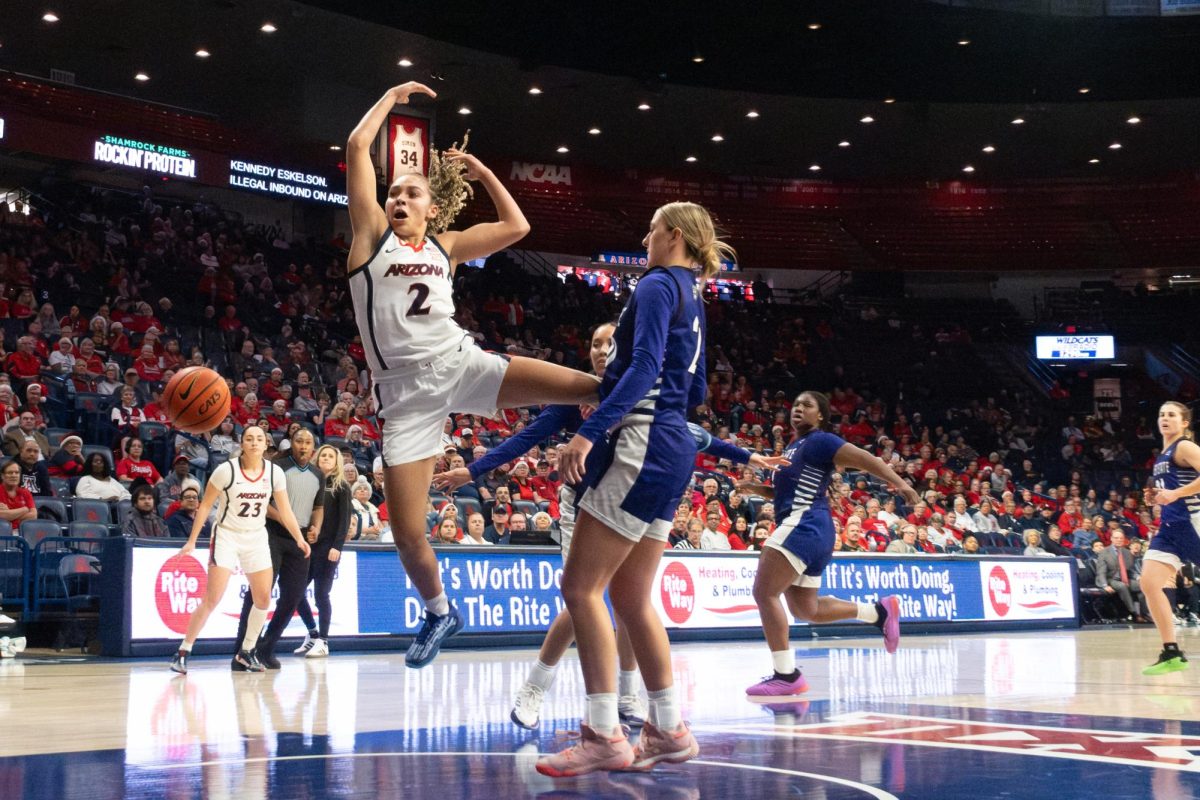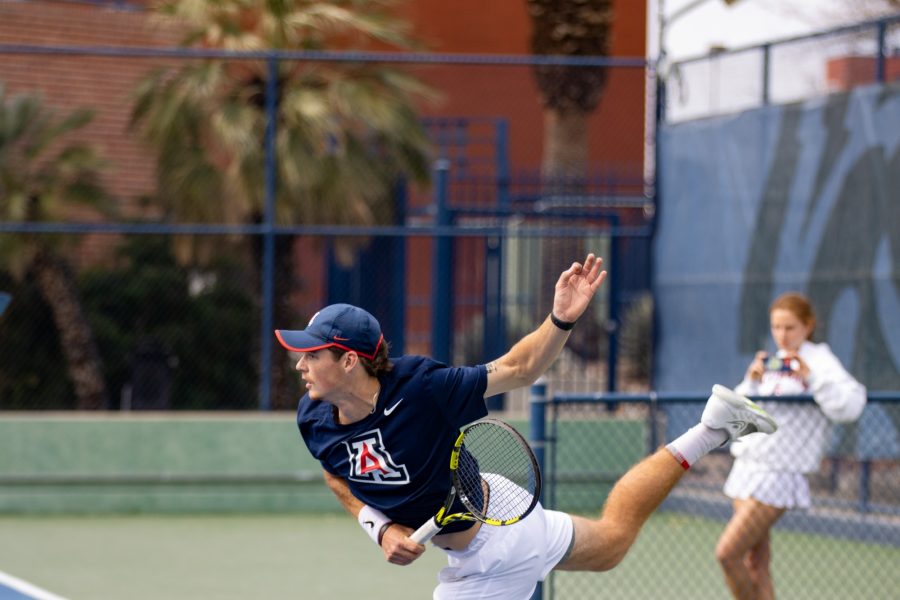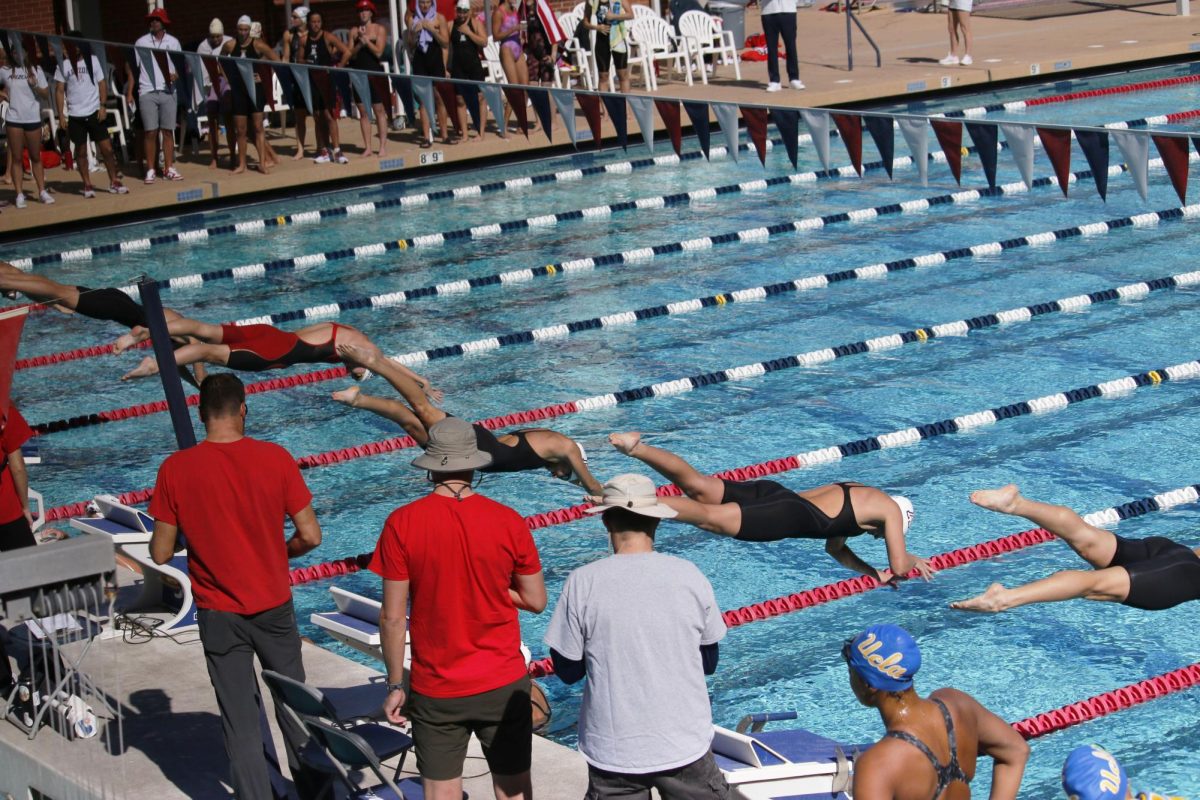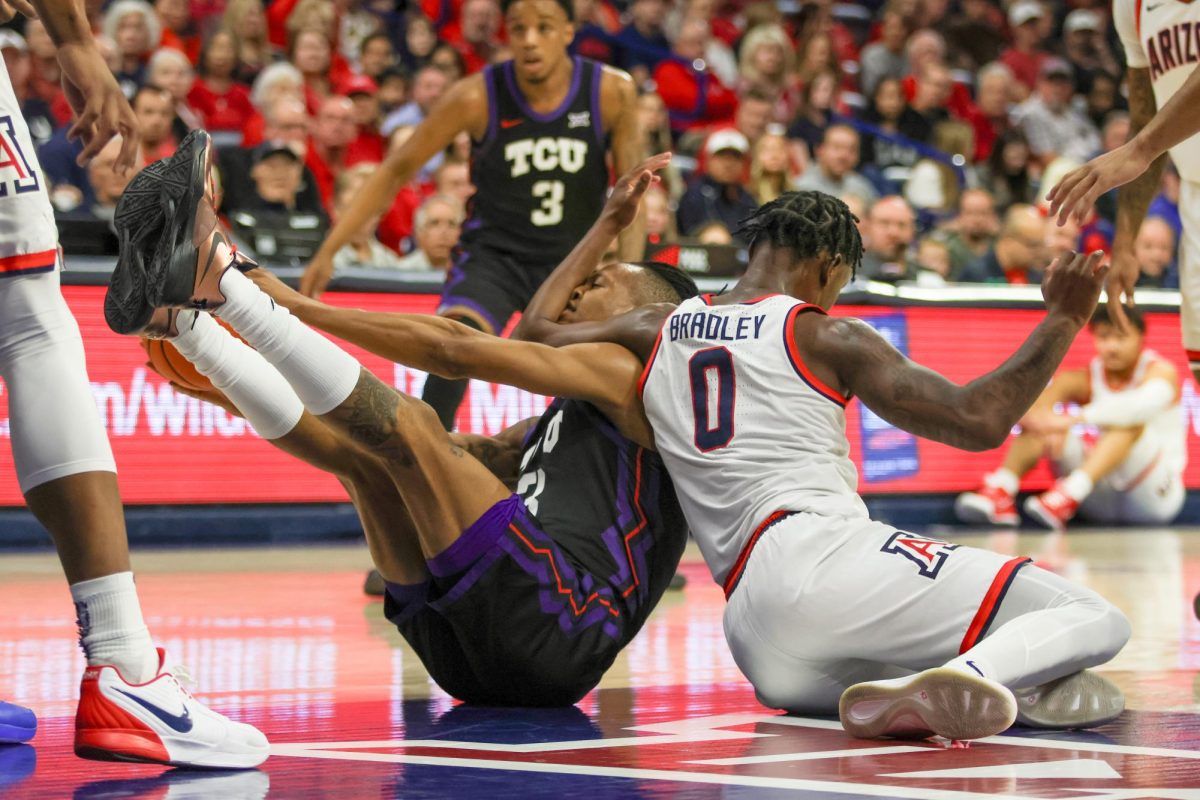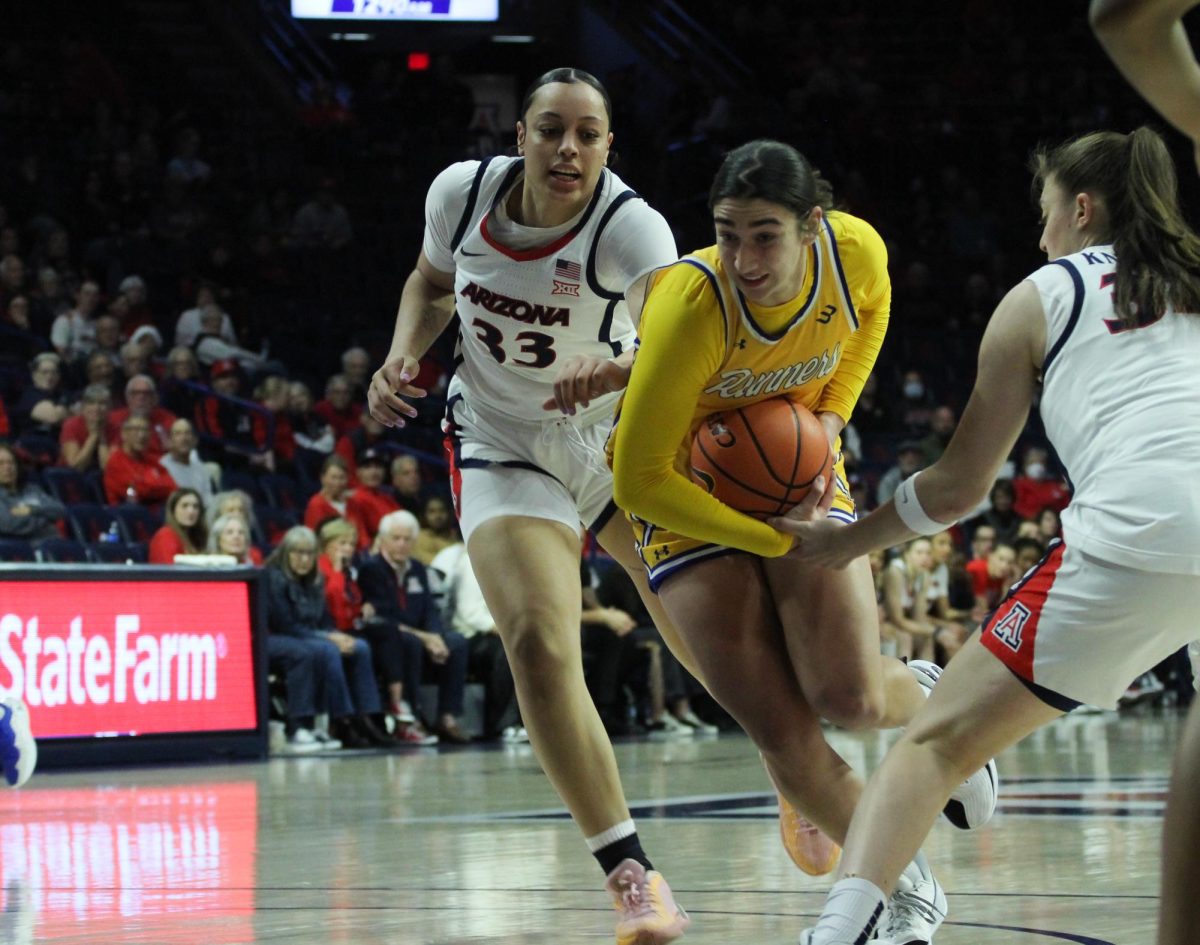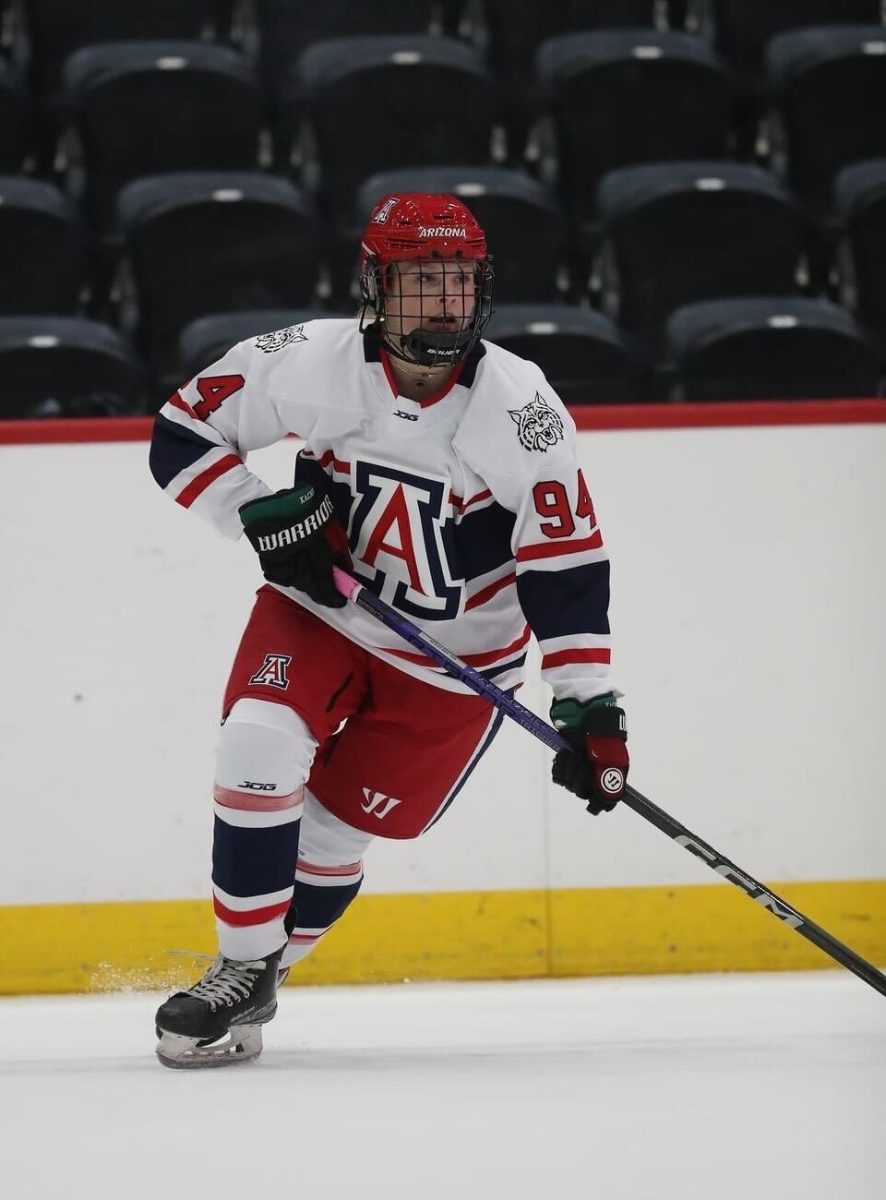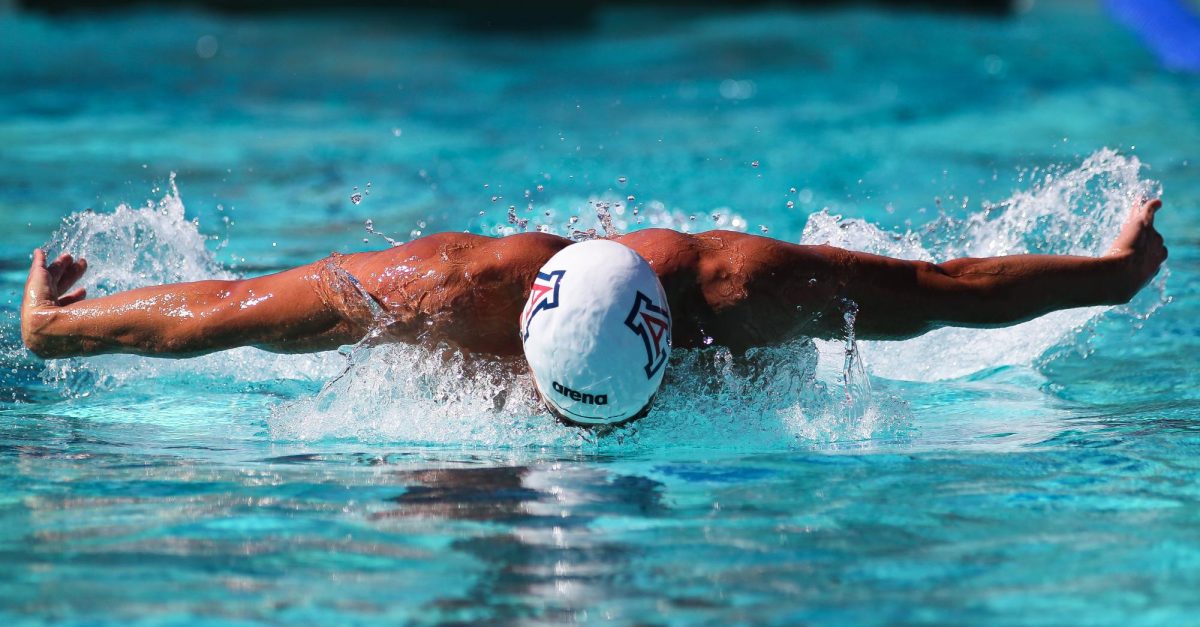Now former Arizona freshman forward Lauri Markkanen declared for the NBA Draft Thursday in a press conference, but the Finnish 7-footer said he’s finishing off the spring semester at the UA, so technically he’s still a Wildcat until the summer.
Markkanen was the first domino that fell within the program, and rightfully so, considering he’s projected to land in the top 10, which is difficult to turn down. With Markkanen officially out of the picture for Arizona’s agenda next season, it’s time to look at him and how the other questionable Wildcats will pan out if they choose to venture into the NBA.
Lauri Markkanen:

Which sounds like the ideal situation: return to school or make millions of dollars playing basketball?
Markkanen is a lock to be a lottery pick, which will happen unless teams decide Finland isn’t their style. According to Draft Express, Markkanen will be selected No. 8 overall by the Minnesota Timberwolves.
He’s entering the NBA in a perfect era where the 3-point shot has become arguably the most viable and deadly shot in the game, and his 42-percent shooting from beyond the arc with his long frame should give him all-star status. Markkanen resembles characteristics from Dirk Nowitzki and Kristaps Porzingis, so if he works on his defensive mobility, he could make his mark as one of the best international NBA players of all time.
Allonzo Trier:

Going into the season, Allonzo Trier was expected to post stats that could give him some NBA attention, but a 19-game suspension for performance-enhancing drugs set him back.
Trier has missed more games than he’s played, but that didn’t stop him from leading Arizona to a Pac-12 Conference Championship and averaging 17.2 points per game. When he emerged as the leader of the Arizona team, he became a wildcard for the NBA Draft.
Trier is 6-foot-5, and his biggest strength is creating his own shot, whether it’s in isolation situations at the top of the key for a step back jump shot or attacking the rim and drawing fouls. This season, Trier averaged 6.4 free throw attempts per game and shot 81 percent from the free throw line. Trier’s game resembles the 2016 version of Houston Rockets guard James Harden now that Harden is a point guard and has became a facilitator, which Trier is not. Trier can score; he can lead a team, but he can use another year of college. The only mock draft that has Trier going anywhere is nbadraft.net, where he is projected to go No. 37 overall in the second round to the Sacramento Kings.
Trier has tremendous upside and his game has become more dimensional in his second season at Arizona, but he has unfinished business to attend to and that’s helping Arizona head coach Sean Miller reach a Final Four.
Kobi Simmons:

The first pair of names that come to mind when evaluating Simmons’ draft potential if he were to leave: Marcus Williams and Grant Jerrett 2.0. In other words, for those who don’t want to research the names mentioned, they were players that had no business declaring for the NBA Draft as underclassmen.
Kobi Simmons flashed scoring ability, sure, but there’s a reason why ever since the home loss to UCLA, he averaged six minutes per game. And that’s being generous, considering he played 14 minutes in Arizona’s NCAA Tournament opening round to North Dakota. So in reality, he became a shadow that popped up every now and again.
His body language on the bench spelled distraught and frustration once his minutes were cut, so he may just roll the dice and see how life works out at the next level.
Simmons is projected to go No. 51 overall in the second round to the Denver Nuggets per Draft Express. He’s got the first name to shine in the NBA, but can he walk the walk?
Rawle Alkins:

The Brooklyn native has more of a right to go into the NBA than Simmons does, because he was arguably the most consistent player for Arizona from start to finish.
Rawle Alkins averaged 10.9 points per game, made the All-Pac-12 Freshman Team and popped his dislocated right index finger back into place and played the rest of the game against Saint Mary’s College in the second round of the NCAA Tournament.
He has the toughness, the attitude and the accolades to give him appeal for NBA scouts, but he’s a hybrid wing player. Alkins is 6-foot-5, 220 lbs. and is built like a small forward, but the average small forward in the NBA is between 6-foot-6 and 6-foot-9. If he were to play shooting guard, then he would have to improve his range, because he shot just 37 percent from 3-point range during his freshman season.
He resembles Lance Stephenson’s game, with the exception of blowing into opponents’ ears, because he plays stingy defense and will do just enough on offense to make the game competitive, but expect Alkins to return to Arizona next season.
Follow Justin Spears on Twitter.



